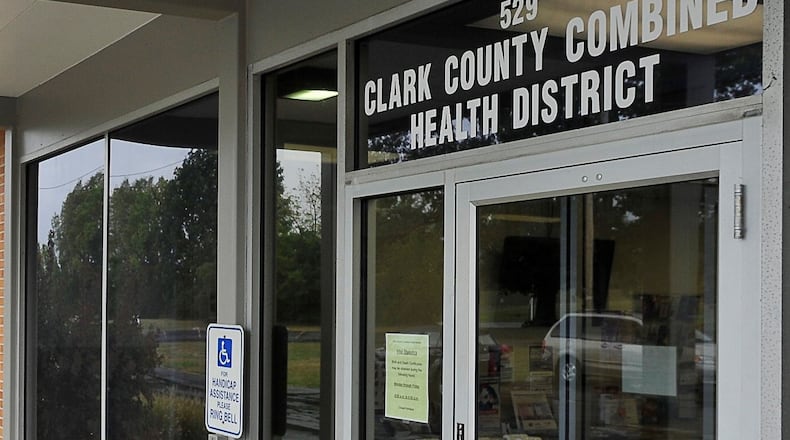The commissioners passed the replacement levy — which is proposed to replace a previously passed health district levy and is set at a rate of 10 cents per $100 of tax valuation — in order to “provide within the Board of Health... with sufficient funds to carry out the general health district program,” the commissioners’ resolution stated. Replacement levies are determined by current property valuations, whereas renewal levies are fixed at a set rate.
“The levy would provide for and maintain existing CCCHD programs, such as our nursing and environmental initiatives,” health district communication coordinator Nate Smith said. The health district’s general health programming varies widely, from smoking cessation to food protection to infectious disease prevention.
Charles Patterson, health commissioner of the Clark County Combined Health District, noted replacements for the five-year levy have been on the county’s ballot upon their expiration for the last 20 years.
The levy makes up a sizable portion of the health district’s annual budget, which totals $7 million. Roughly 30 percent of the district’s funding results from the levy it requests every five years, with another 30 percent resulting from user fees and 40 percent coming from grant funding.
Without this levy, approved by the commissioners Wednesday and set to appear on the Nov. 2 ballot, the health district would need to reduce services in response to the funding cut, a detriment the community “can’t afford,” Patterson said.
The health commissioner pointed to the county’s low ranking — 80 out of 88 — in terms of county health rankings designated by the University of Wisconsin, which ranks counties against others in their state in terms of many health-related items, with “years of life lost” being a major factor, Patterson said.
“Years of life lost” is a metric calculated through deducting a person’s age at death from their expected total lifespan: for a white male living in Ohio, that’s typically 75. Patterson noted the county’s ranking has significantly fallen in the past 10 years, given life primarily lost to the opioid epidemic.
The proposed levy replacement falls during a pandemic that has claimed the lives of more than 300 Clark County residents.
The health commissioner stated that although the district did miss out on revenue opportunities as a result of the pandemic, COVID-19 didn’t necessarily create budgetary woes for the department, as an influx of federal and state funding was allotted to CCCHD for its COVID-19 response. In addition, Clark County and Springfield CARES Act funding was funneled to the health district, Patterson said.
If anything, Patterson said, the pandemic may also serve as a reminder of the importance of health departments.
“When there’s a major communicable disease, we’re here to respond to it,” he said. “And that’s why there’s a levy.”
By the numbers
$2.5M: Approximate amount of money replacement levy will generate
5: Number of years the levy will cover
$35: Amount levy will cost owner of a $100,000 home
About the Author

